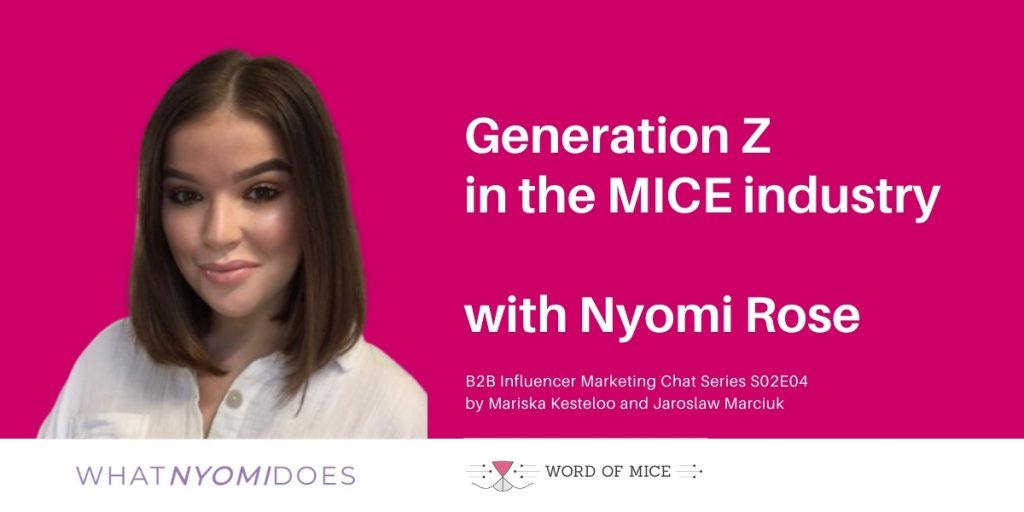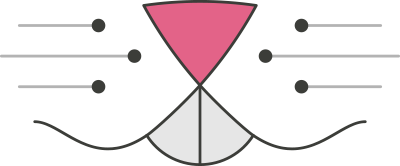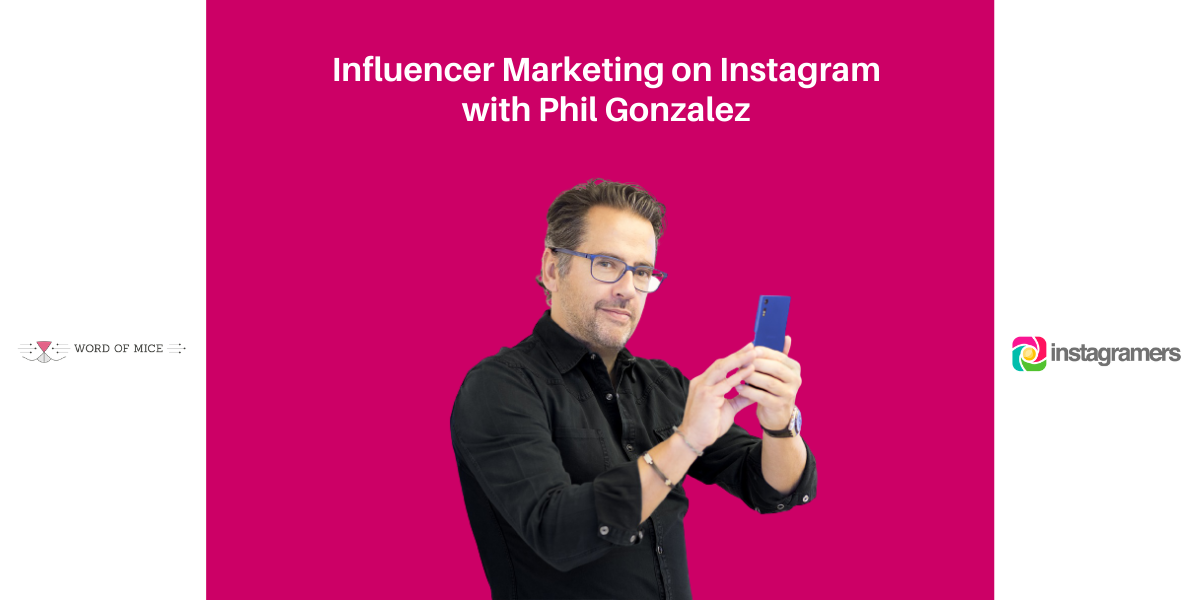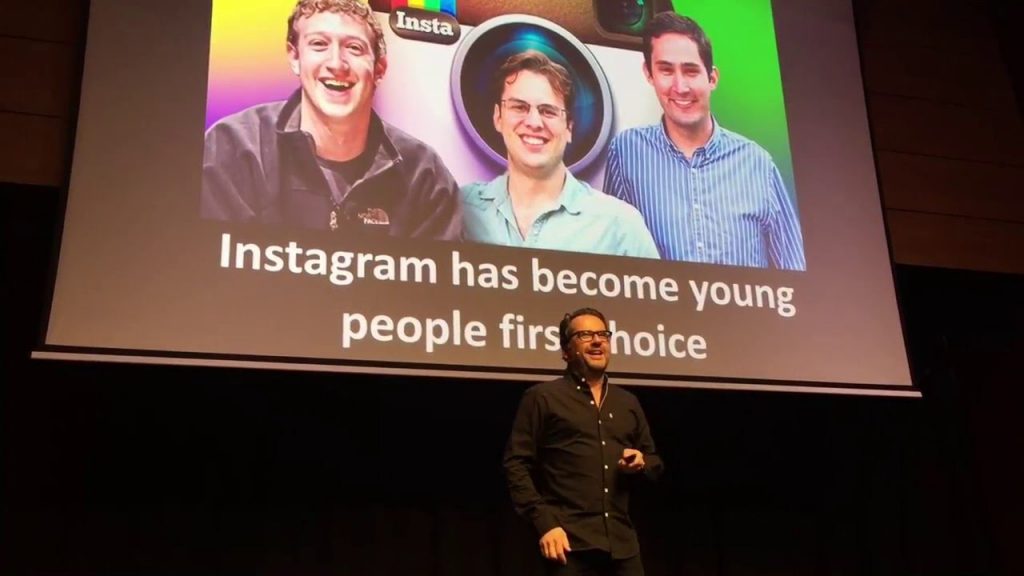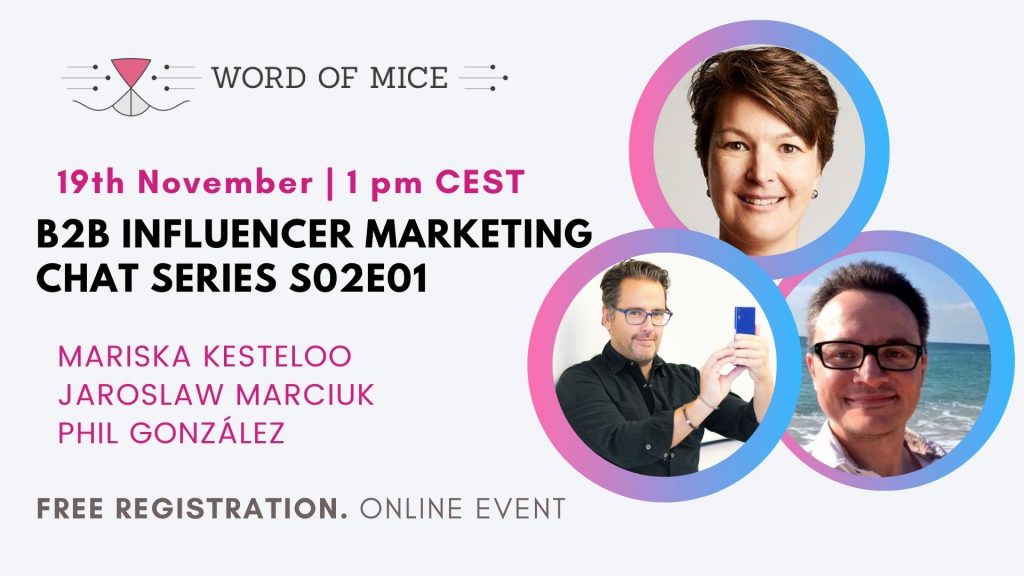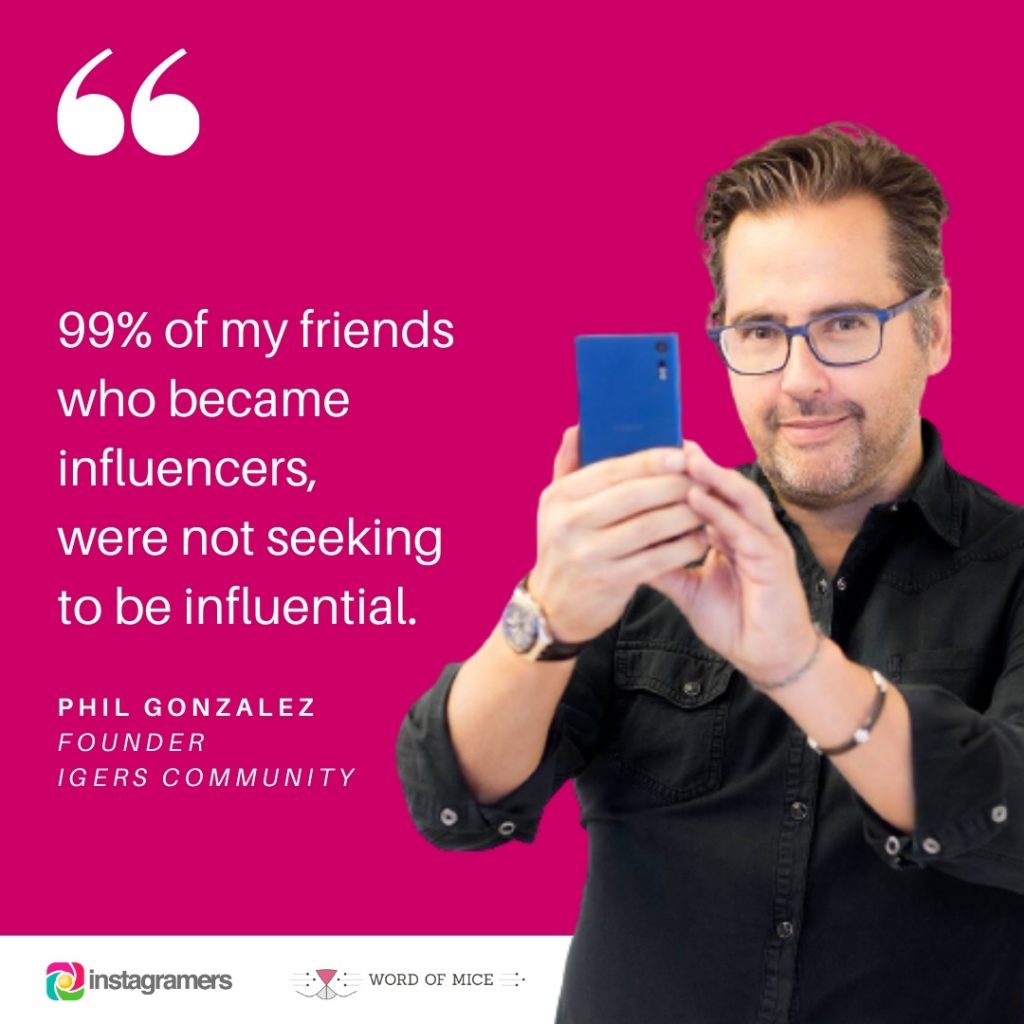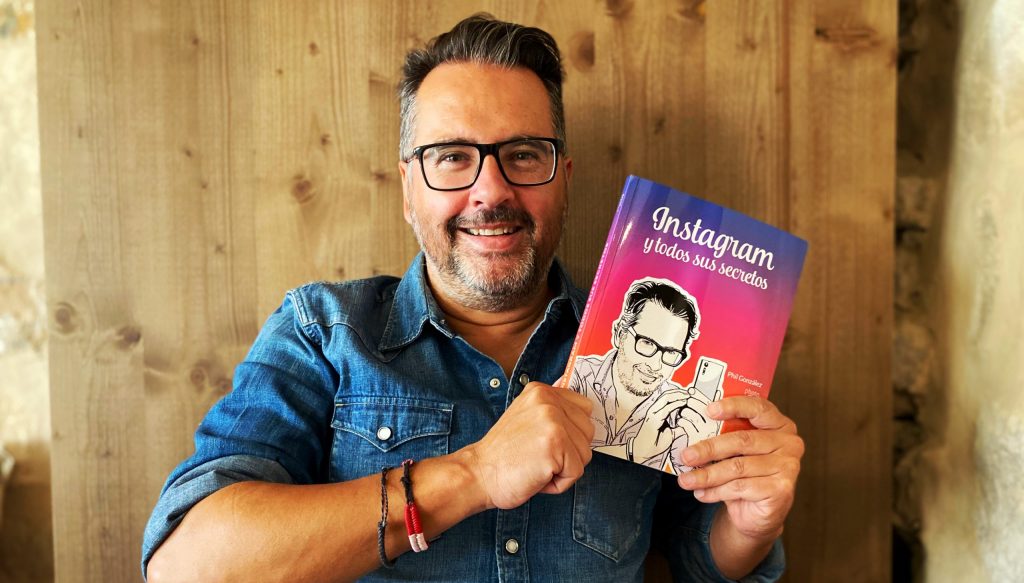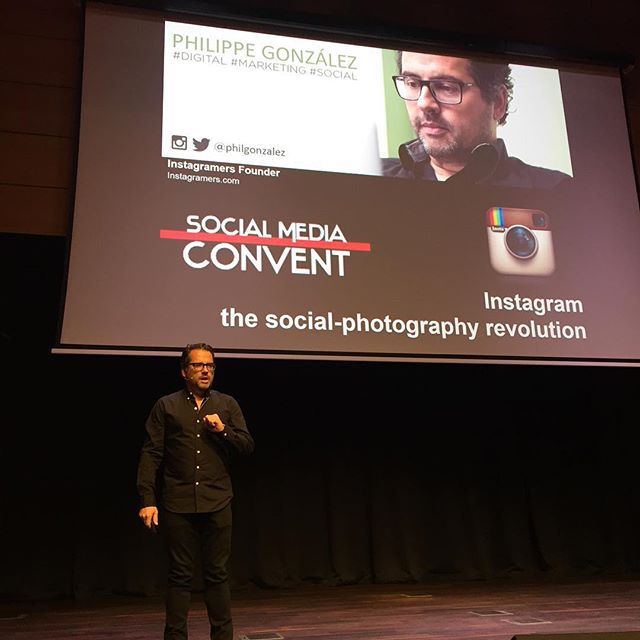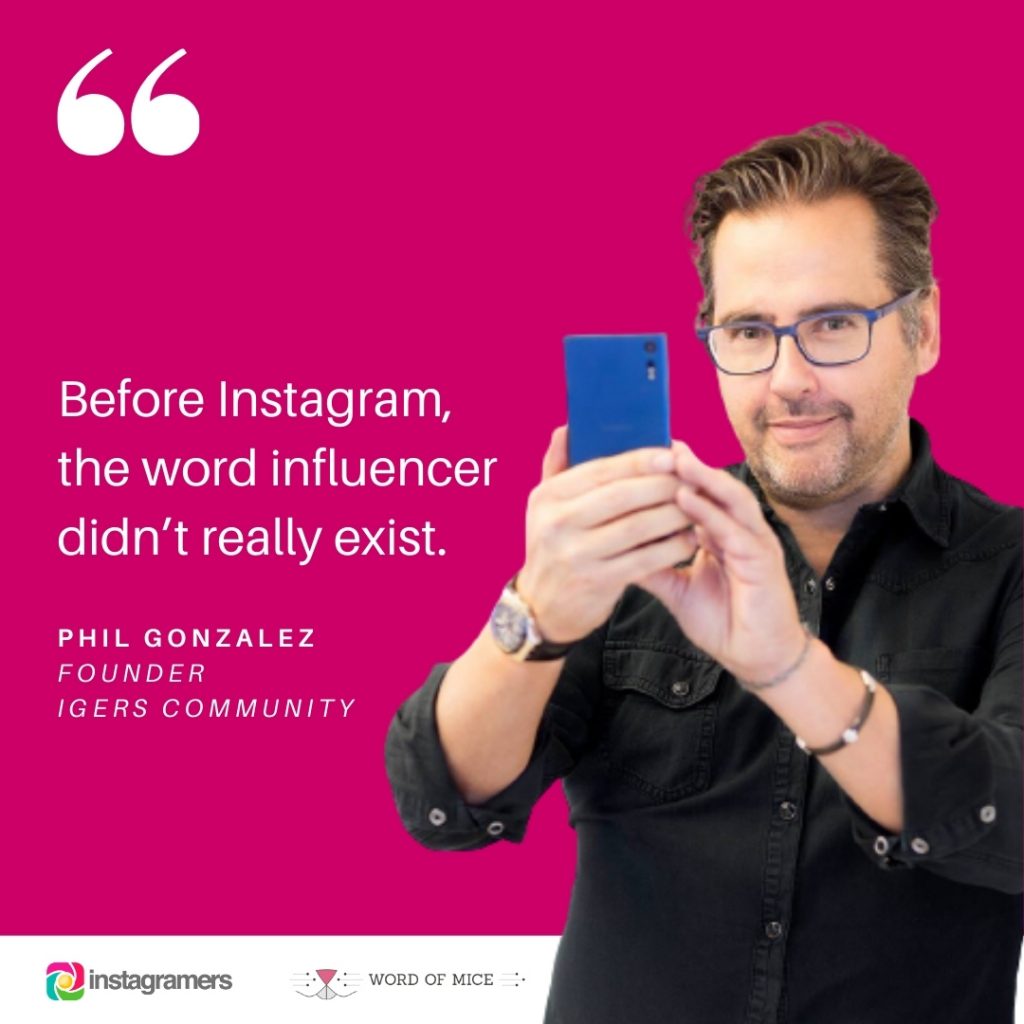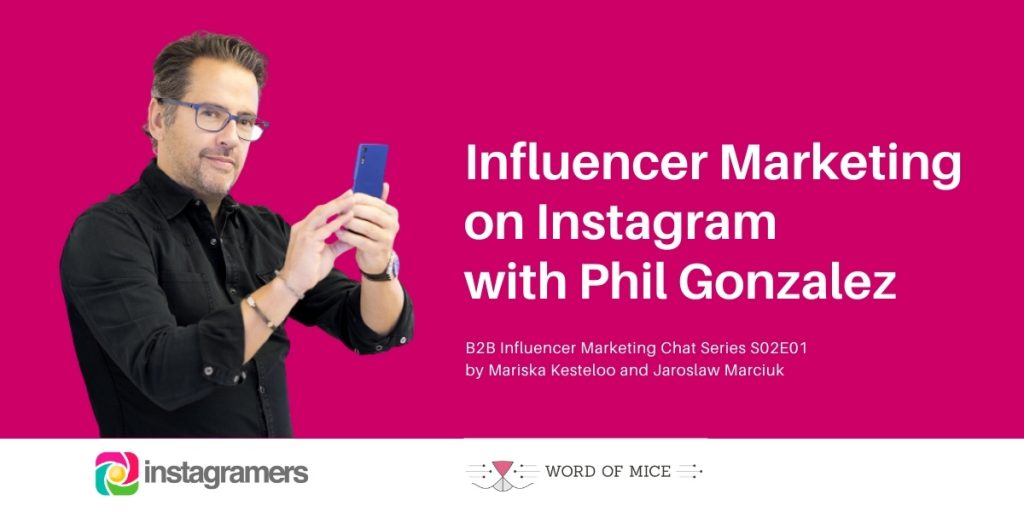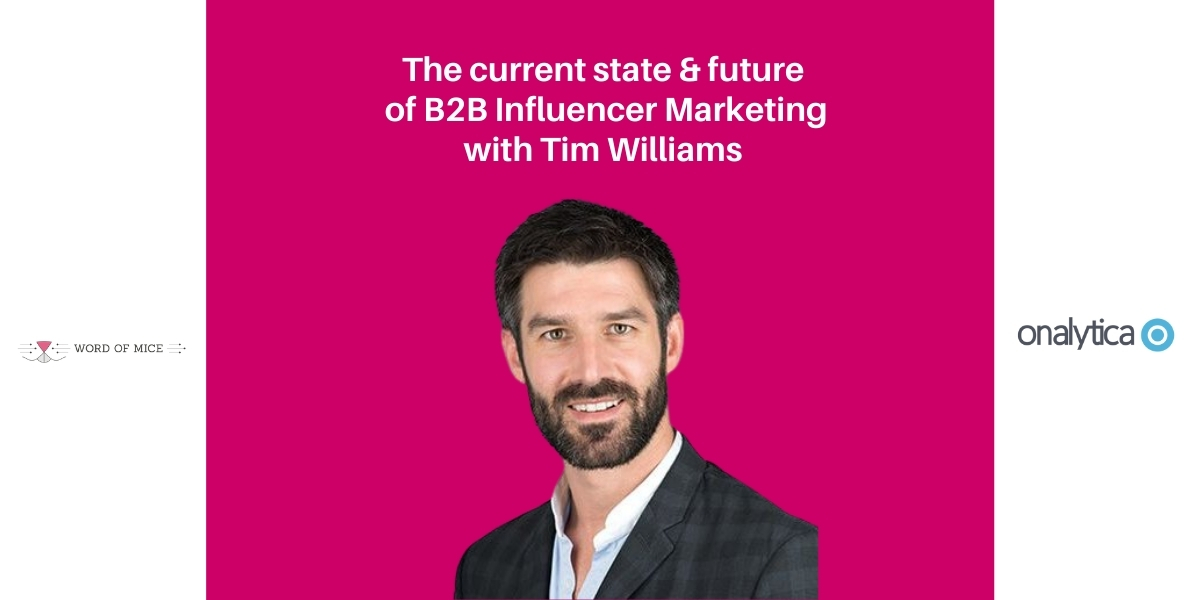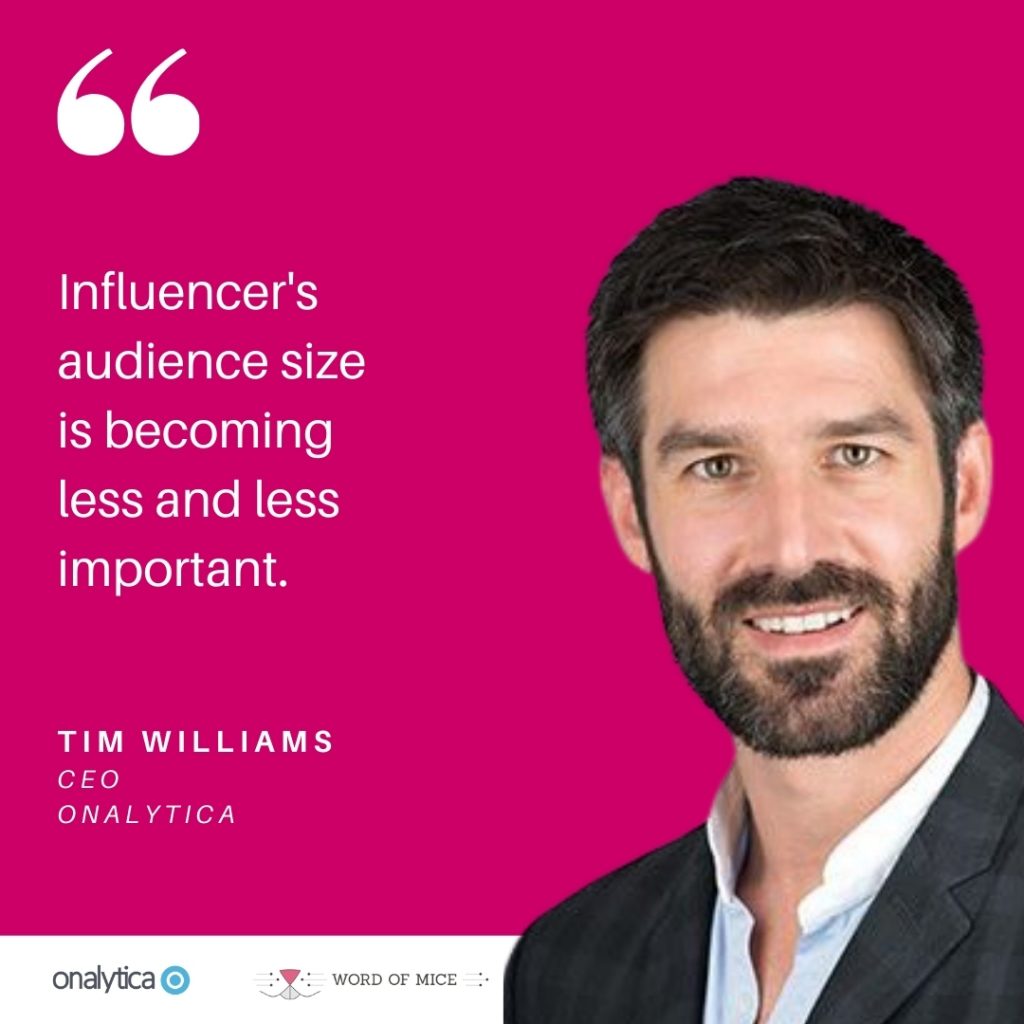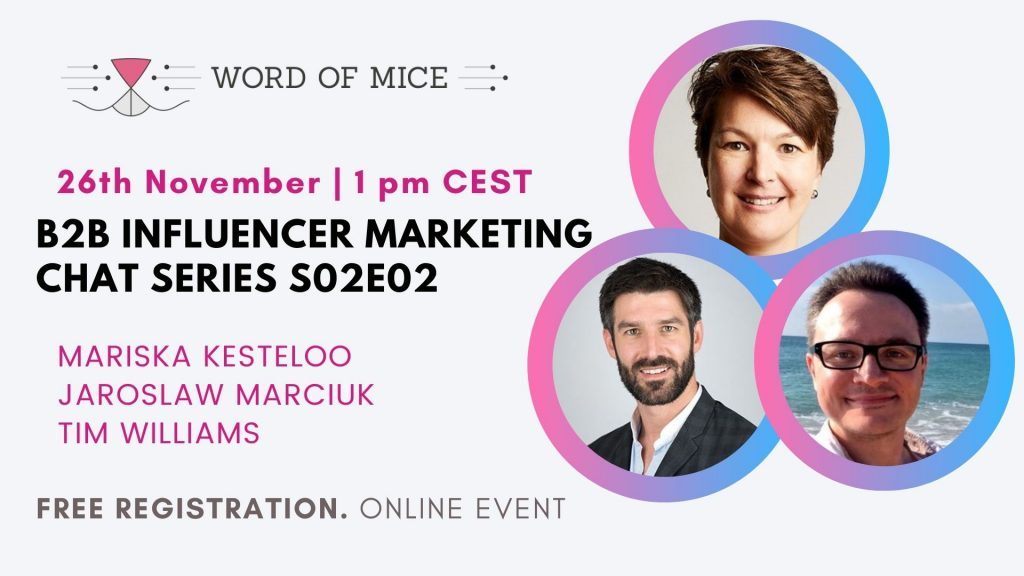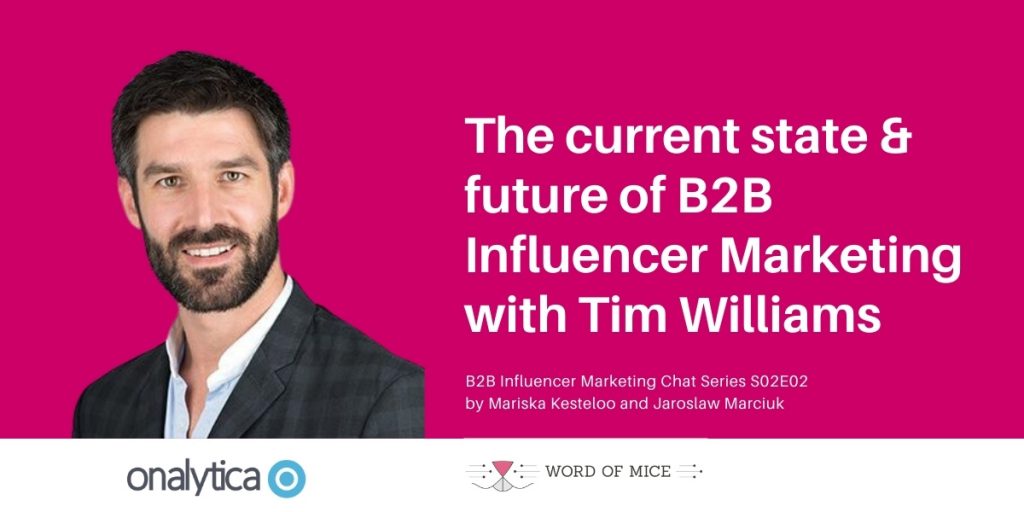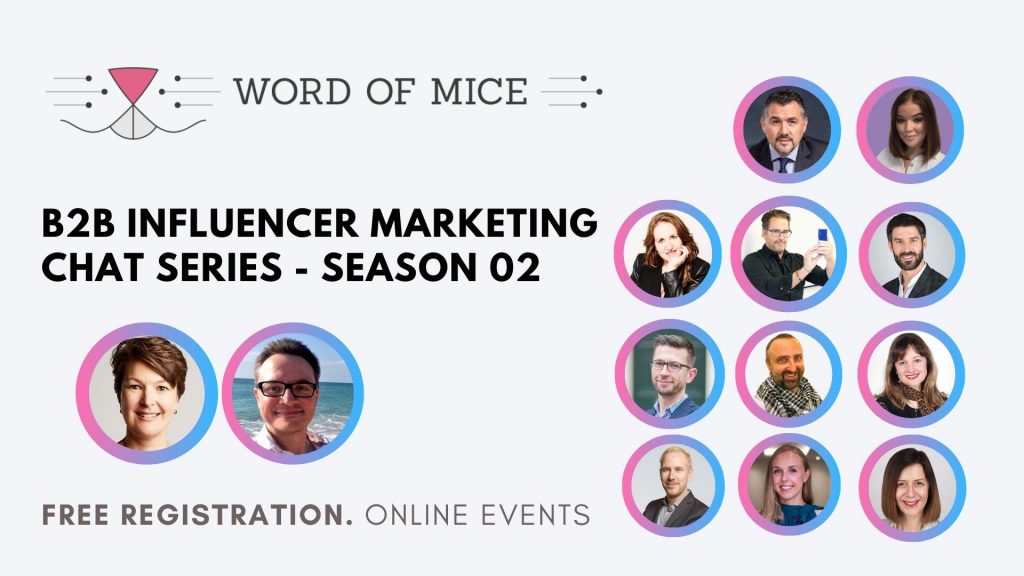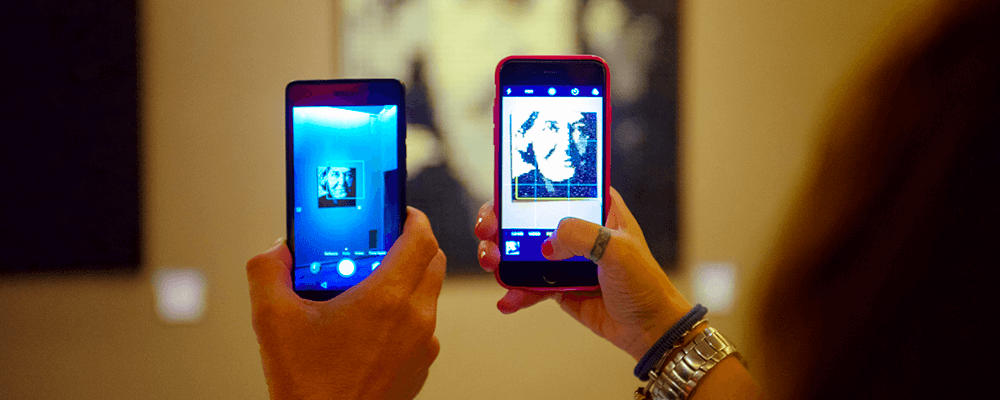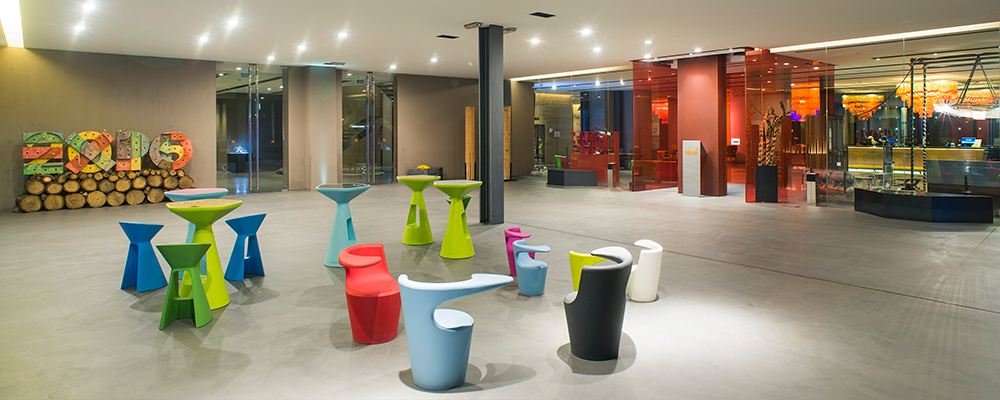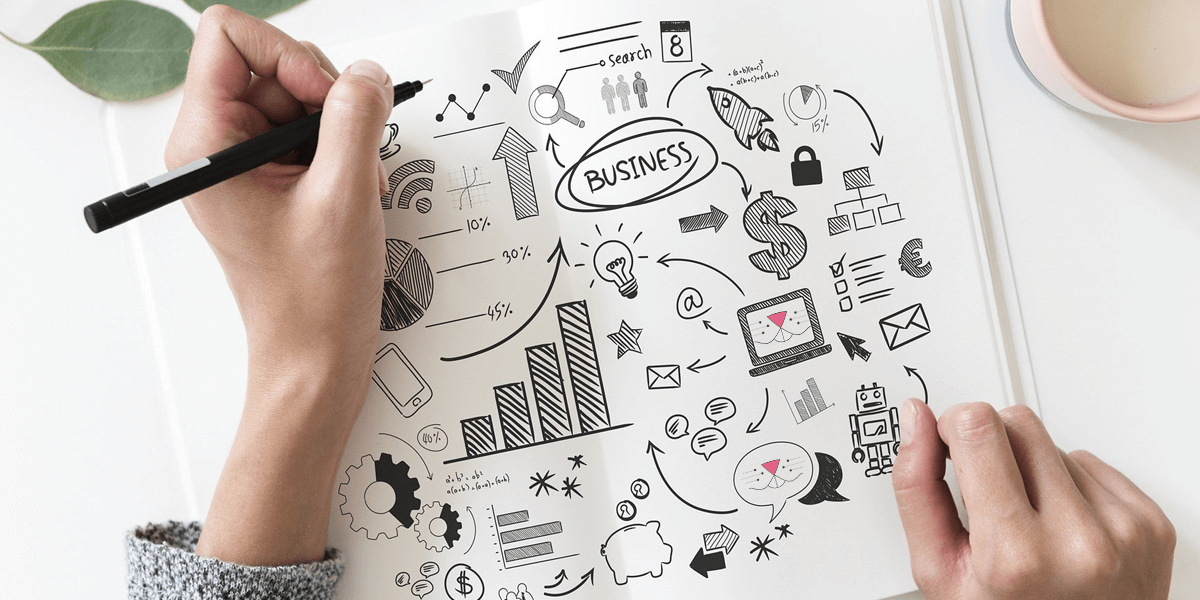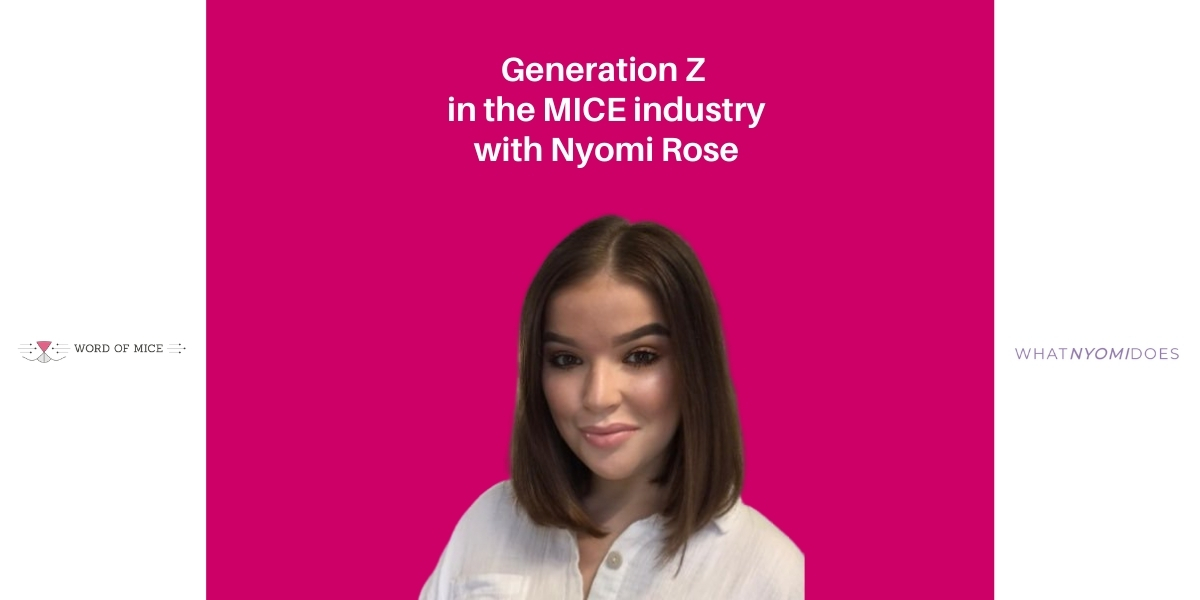
Generation Z and MICE industry
Mariska: Sometimes I have a feeling that the MICE industry is running behind and we miss opportunities. And I think also now with TikTok so it would be great to see in the future that also destinations, technology partners, suppliers, trade shows, anyone who’s active within the industry, also the event planners, they will also focus more on the next Generation Z.
I think that we’re still missing that, for example if you go to a regular trade show. If IBTM was there now, on a normal way, then the average age I think it would be around 35 or older that you would see in Barcelona. You don’t see many young people normallyon events like these. So I think, one to embrace the next generation and want to feel them welcome. GenZ people approach is different, the way how they work is different. I think it’s very important to be on and at least watch TikTok and other social media platforms where young people are active.
Our guest, Nyomi Rose, talks about the next generation Z and MICE industry. She is very passionate about it. I think there’s also, and not only within our industry, a huge gap between the difference in generations. Nyomi, how do you see that evolving? Because you’ve mentioned a very funny example. You went for a job interview, and you got some standard questions, which I found really embarrassing from the person who did the interviews in the past. I think there’s again, same like TikTok, a lot of misconception and misperceptions about Generation Z.
Nyomi: I’m a young event professional, a lot of people don’t know how young I am. I’m 20 years old, turned 20 in August. I’ve done enough to really build a lot of my learning and development and skills through social media, which has really helped me. And especially when, like you were saying, I went to a job interview, and people usually don’t realise how young I am, and feel, then that I’m not very capable, because of my age, but then they bring me into the interviews, thinking how experienced I am.
You know, there’s still lots of different misconceptions about young people and the MICE industry. And I really just feel like, people need to embrace, meet embracing people. And I feel like it really starts with representation. If you really want to be forward thinking destination or event really bringing a wide audience andputting people on the panel speakers, you need to be open minded.
We are talking a lot about the future of the events industry. There’s no young people on the panel discussions on many events. I will say even more, there’s not a lot of young people who are signing up for the MICE industry trade shows tickets. People have got to realise why is that happening. Because we’re not being included? How do you communicate with Generation Z on social media? I hate to say it, but maybe you are doing boring content?
Mariska: It’s true. I’m a Dutch, so I am allowed to say it. I’m talking now in general. And like I said, it’s not adapted towards your generation, also that we still sense that and also the way how we reach out to you. And like you said, you don’t call and you prefer to speak with a chatbot or perhaps via Instagram chat function or messenger. And but it’s often not used in the regular communication from events and meeting planners.
Trade shows and events fitted to Generation Z
Jaro: Is your generation actually interested in trade shows and events in the MICE industry?
Nyomi: I feel like we can make people interested in anything, if we understand that generation. Sso for example, we have trade shows, if you go for example on TikTok, you can see that there’s a trending hashtag at the moment where people are showing the cars, trips, places, their makeup and so many different other topics. It’s such a variety and there’s trade show that are out discussing different things like that. And so I feel like it’s important that people really understand that we are interested if you make us interested, so instead of using content that is usually used for old, don’t want to say older, but you know from my experience, my experience generation.
Sorry, guys, but my experience generation I feel like they have their different type of content. They’re targeted differently, because that’s what interests them, that’s what brings them and you can’t then use that same type of content and then expecting people to then be interested. You’ve got to think creatively, you know, TikTok is all about inspiration, entertainment and education. It’s all in an authentic wat, where I feel like we can really see a lot of people who are trying to sell stuff.
You know, a lot of companies, for example in the UK, we’ve had a lot of discussion about the supermarkets who all came together for Christmas to share the hashtag, which was stand against racism. But the thing that they did with that is that they didn’t put any actual actionable things behind that campaign, they didn’t really actually engage with anybody, they just expected to put it out there. And for a lot of love to go, their way, and it didn’t necessarily go their way, because it was performative. You can’t expect to put things on them, people just go across and a lot of the younger generation are more analytical, we can really pick things apart.
We’re very good at looking back at the history of these companies finding out who was working in these companies, and really, dig deep into understanding who these people are. And I feel like, when we are creating content, we really got to make sure that it’s not just bare content, if we’re really wanting to bring young people in, really talk to them, offer them opportunities, embrace them into the actual event design, embrace them into the schedule, and go to work where they usually hang out, which is places like TikTok and Instagram, and which is doing a lot of video content.
And I feel like that is how we can make people interested. But like I said, you’ve got to make interesting content the way you actually understand. And like I mentioned at the beginning, if you’re saying, send me an email, and let’s book a session, I can tell you categorically that young people will not email you to be interested. Like we’re saying chat boxes, simple forums, where you don’t really necessarily have to talk to anybody. And that sounds like we’re a generation who don’t want to have human contact where we’re all about that. But we’re all about automation and things being simple, and not having to take the long way so I feel like that has really got to be understood as well.
Less is more
Jaroslaw: You mentioned that you’re overwhelmed by Facebook, right? There are so many features and options on Facebook. Do you look for more simple solutions in consuming content?
Nyomi: Yes, I was just gonna say that I completely agree. In fact, Facebook and a lot of other social media platforms are trying to be everyone and everything at the moment. But things like Facebook, the reason that then I feel that they’re not able to grow, it’s because they’re trying to do two things at once. And also the whole user design is just not appealing. Personally, I find it very confusing, there’s things at the bottom, things at the top and things splash in the middle of the screen, things pop up from the left to the right. And on Facebook nothing is very simple.
Whereas if you look on the TikTok platform interface, it’s got none of this sort of banners at the bottom, the video is actually the background for the whole time. There’s not much advertisement on TikTok (for now). You just got to follow ,like, comment, and share. And you can just swipe. How simple is that. And that’s why a lot of people love TikTok, because its simplicity.
MICE industry and social media in the era of COVID-19
Mariska: There’s a huge potential out there for TikTok and influencer marketing in the MICE industry. How do you see that evolving specifically for our industry, because the meetings and events industry is not so active. And we talked most about diversity inclusion, which is also of course, a hot topic in our industry. And how do you see that? Well, in your ideal world, what are your predictions? Or how do you see TikTok and events industry evolving? Would love to hear your opinion about that.
Nyomi: I feel like before COVID happened there was a lot of interest and MICE event professionals were actually really using social media and actually understanding it. And this was before TikTok the platform that we see it is now. And but the content that you can create on the Tik Tok platform, it’s so crucial just to actually, and that younger generation, because as much as we can say, you know, if we’ve got an event, and it’s for something that might not necessarily target the audience.
The younger audience can still learn from that. And then from those event professionals see behind the scenes we have, that they put together an incredible show, you know, meet industry speakers, that I feel like that the MICE industry is going to have to, it’s just, I feel like it, there’s not two ways about it, I feel like it’s going to have to use TikTok. And the way that the MICE industry is going to be able to do that is by opening the doors to younger people. People who know TikTok to come in and say, ‘Look, let me show you how to use this platform, and let me show you how this can work’.
I feel like that’s how the MICE industry can really start leveraging themselves. But I think it’s really important that when the mass industry just come on conferences, that they’re not creating content or creating advertisements, because like I was saying, TikTok is for Generation Z and the young people have so much content, and so much advertisement shown to everybody and think every action. Everybody can agree that every time you go on to all these other social media apps, or even when you just look at Google Search, you’ve got Facebook ads popping up, you’ve got Google Ads popping up, people trying to sell you stuff. You want to watch a YouTube video, and you’ve got an advertisement.
The importance of data
Mariska: I also like to TikTok because I’m Dutch, very straight to the point and we like very practical, easy to use tools. I want to mention something that you highlight is about data. And I think we need to have another conversation about data because we think we need 30 or 45 minutes to cover that topic. It’s really interesting that you do a research upfront with who you’re going to see and that you can see what kind of content the company even a person that you would speak within the company that you will say okay, over three years ago, he worked for another company which did not perform well or that company had a scandal or a claim or whatever. So it’s very interesting that you searched those data. And I think that’s still a very underestimated value within he MICE industry.
And like the younger generation, you grown up with social media, with the importance of those data and analytics. And I think that our generation is now with the digital world and being forced to be online, we’re now getting used to work with the data and analytics, but it’s still not at the forefront, and especially from meetings and event industry. I think that’s also perhaps one of the reasons why I’m not sure why they’re perhaps scared to use online platforms, or social media platforms like TikTok.
Nyomi: Yeah, and I feel like it’s very interesting, especially with the use of data, I feel like people are saying in the comments as well that a lot of the MICE industry are using traditional methods methods, like print media, emails and banners and things like that. And that sort of data, it can’t necessarily be as predictive, I can’t be as analytical as social media and digital media is, but in terms of TikTok`s algorithm, so there are data analytics, you know, if you create your TikTok account for a professional reasons, you can then see all your analytics and see, really, who’s watching when, when’s the best time to post etc.
But in terms of the general events industry, trying to use data more. I feel like, we’ve really got to make sure that we’re actually empowering our employees first, to really get them to understand the importance of data. So instead of just, putting out surveys, or things like that, we’ve got to be more creative with how we’re going to try and feed that data. And instead of asking simple questions, getting to know those people a lot more and connecting with them, is how you can really create, better data for you to then analyse, but then also using data, after your event to really help you with improvements.
And really just growing, as growning as a company or as an event, it’s really important that you actually look and analyse that data, you really manipulate it to understand why are people acting like this, or why people are interested in this, or that it’s really important that you can then look at that data to recognise there’s not a lot of young people here.
Now, why is this, is it because of these reasons xxx, and it’s important that you then create that data and then share it with people, too many people are keeping data to themselves. And people don’t realise that data is meant to be shared, obviously, with them legally. And but that data is meant to be shared to your community. And if you are sharing data that’s saying, ‘look where we recognise the gap here, like you know, come on community, let’s bring this, like, let’s go this new direction’. That’s what it’s supposed to be used first to help you improve and continually develop, but a lot of people don’t necessarily know how to do that. So that’s where it’s important that we are empowering people to use data, and not for it to be such a thing where it’s oh my gosh, like numbers and numbers, etc. It can be a lot, it can be a lot simpler than a lot of people usually make out to be.
New opportunities
Mariska: I think in general, it has a lot of opportunities. So hopefully now with the push of the younger generation, we’re able to share experiences and to see also how important our industry is. Because that’s actually also what it’s about, and why are so many impact on local economy, because so many suppliers and supply chain is involved in the entire industry. And it’s indeed by bringing people together.
We need to be an example. We need to be that inspiration for others also to follow us. I think sometimes we need to be not saying that leader but sometimes you need to take the lead.
Nyomi: Yeah, the importance that we’re all here to help the MICE industry grow. You know, we really need to make sure that the 2021 plan is to grow the industry and to make sure that we come back even stronger. And the only way we can do that is by bringing more people together. And not excluding different generations, but embracing each other, all of our different thoughts, ideas and experiences. I feel like that’s just so important for 2021. But also, I was gonna say, check out the Word of MICE TikTok Challenge, because we put out some really great advice and on how you can create that content on TiTok, and I believe you have to see change because we will have something coming out in the new year. So if you do want to understand how to Tik Tok, go look through that blog, and you can really sense that your tiktok journey, but I’m always here to help out.
